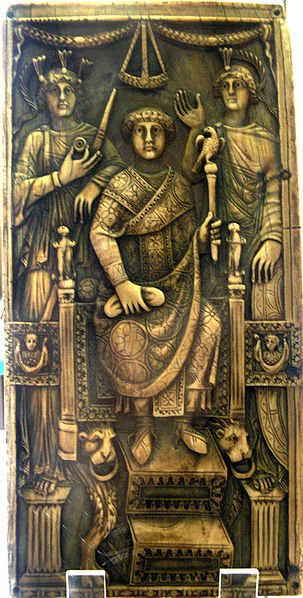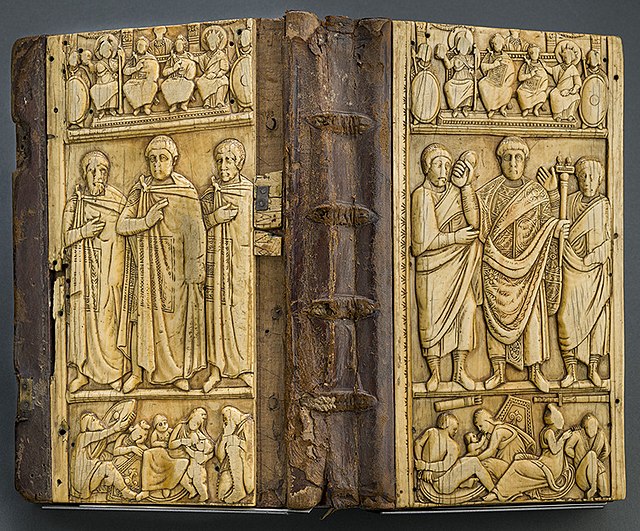In Late Antiquity, a consular diptych was a type of diptych intended as a de-luxe commemorative object. The diptychs were generally in ivory, wood or metal and decorated with rich relief sculpture. A consular diptych was commissioned by a consul ordinarius to mark his entry to that post, and was distributed as a commemorative reward to those who had supported his candidature or might support him in the future.
One of the consular diptychs of Areobindus Dagalaiphus Areobindus, consul in 506, showing him in an imago clipeata (Louvre)
Consular diptych of Magnus, who was consul of Constantinople in 518. He sits between figures representing Rome and Constantinople. Louvre
Diptych of Anicius Petronius Probus, consul in 406, depicting emperor Honorius (oldest surviving example)
Diptych of Constantius III, produced for his consulate in 413 or 417.
A diptych is any object with two flat plates which form a pair, often attached by a hinge. For example, the standard notebook and school exercise book of the ancient world was a diptych consisting of a pair of such plates that contained a recessed space filled with wax. Writing was accomplished by scratching the wax surface with a stylus. When the notes were no longer needed, the wax could be slightly heated and then smoothed to allow reuse. Ordinary versions had wooden frames, but more luxurious diptychs were crafted with more expensive materials.
Ivory consular diptych of Areobindus, Byzantium, 506 AD, Louvre
Wax tablet and a Roman stylus
Barberini Ivory, Constantinople, 6th century, Louvre
Diptych with the Coronation of the Virgin and the Last Judgment, Metropolitan Museum of Art







